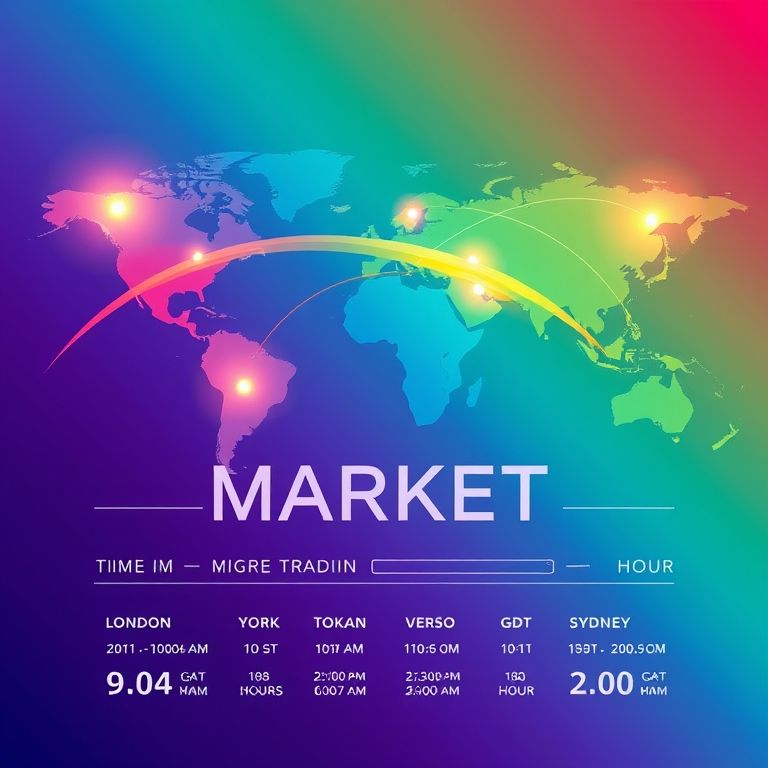Forex market opening hours GMT
Forex market opening hours GMT
Introduction
If you juggle forex, stocks, crypto, indices, options and commodities, GMT becomes your reference heartbeat. The moment the clock hits GMT, liquidity shifts, overlaps light up, and opportunities drift across screens worldwide. I’ve learned this by watching mornings start in London, afternoons in New York, and overnight moves ripple through Asia. The promise? Clarity on when major players show up, and how to align your plan with real-market tempo. This piece breaks down the opening hours, what they mean for different assets, and how to use that rhythm to your advantage—without grand promises, just practical steps and a view of where the industry is headed.

Opening hours at a glance (GMT anchors)
- Sydney session: roughly 22:00–07:00 GMT
- Tokyo session: roughly 00:00–09:00 GMT
- London session: roughly 08:00–17:00 GMT
- New York session: roughly 13:00–22:00 GMT
Markets don’t sleep all week, but they do sleep on weekends. Timezone shifts from daylight saving can nudge these windows by an hour or so, so many traders keep an updated calendar handy. The key takeaway is the overlap periods—when two or more big centers are trading at the same time—are where liquidity often spikes.
Why GMT matters for traders
GMT is a universal x-ray for market rhythms. It helps you pixel-map when major sessions overlap, when earnings or macro releases land, and how spreads and volatility can widen or compress. For a prop trader or a freelance trader juggling multiple assets, GMT clarity translates into smarter scheduling—knowing when to chase moves and when to step back.
Across assets during GMT hours
- Forex: the classic liquidity surge happens during London-New York overlap, roughly 13:00–17:00 GMT, with sustained activity during London’s morning and New York’s afternoon sessions.
- Stocks and indices: major futures and stock-linked instruments tend to pick up during London and New York overlaps; earnings news in the US can drive sudden moves into the close.
- Crypto: crypto trades 24/7, but real-world liquidity often follows traditional market hours and exchange activity in major hubs; you’ll see more predictable moves around GMT overlaps.
- Options and commodities: crude, gold, and other futures respond to macro triggers and geopolitical news. Timing entries near session starts can help with liquidity, while awareness of weekend gaps keeps you from surprise moves after Friday’s close.
- Diversification tip: using GMT anchors to sequence trades across assets can smooth your equity curve—you’re not chasing a single market’s mood; you’re riding a rhythm.
Key features and practical points
- Liquidity bursts align with overlaps, offering tighter spreads and better fill quality when you trade actively.
- Overnight risk remains a factor even with GMT planning; news events can spike volatility outside core overlaps.
- Data and backtesting: aligning your historical watches to GMT makes backtests more realistic when you’re simulating overlaps and earnings reactions.
- Risk control: during overlap hours, tighten your stops to guard against fast moves; in off-peak times, you can widen stops a bit if you’re exploring newer setups.
Reliability and strategy notes
- Build a simple daily routine: screen a few high-liquidity pairs at overlap windows, note which assets react strongest to particular news, and keep a journal.
- Use a risk-per-trade cap (even a modest 0.5–1% for smaller accounts) and predefined exit rules. Consistency beats flashy bets.
- Diversify across at least two assets that show different session patterns, so you’re not exposed to a single market’s quirks.
- News calendar discipline matters—GMT makes it easier to pre-plan around major releases and avoid being caught off-guard.
DeFi, smart contracts, and AI: present and future
Decentralized finance is stacking up as an alternative liquidity layer, with automated market makers and smart contracts enabling programmable trading strategies. The challenges are real: fragmented liquidity, security risks, and regulatory scrutiny. Yet the vision—trust-minimized, programmable trades that run around the clock—fits a world where GMT remains a reference, but the rails extend beyond traditional venues.
Smart contracts and AI-driven trading are the next wave. Expect more automation for order routing, risk checks, and cross-asset signals that adjust in real time to GMT session shifts. For prop traders, this means scalable models that respect capital rules while exploiting known liquidity windows.
Prop trading prospects
Prop desks are increasingly leveraging GMT-informed calendars to optimize funding windows, risk checks, and cross-asset strategies. The advantage isn’t a magic shortcut; it’s the disciplined use of session rhythms to align capital deployment with liquidity and volatility cycles.
Future trend: try a GMT-aware mindset
- Smart contracts may automate routine entry/exit rules around overlaps.
- AI-driven pattern recognition could identify which overlaps historically yield the best moves for your favorite pairs and assets.
- Decentralized exchanges could co-exist with traditional venues, offering more granular liquidity during specific GMT windows.
宣传用语(GMT theme)
Trade with GMT clarity—opening hours you can count on.
In closing
GMT isn’t a gimmick; it’s a practical compass for navigating a world of multi-asset trading. Use it to plan, test, and refine your approach across forex, stocks, crypto, indices, options, and commodities. As DeFi evolves and AI-enabled trading grows, keeping one eye on the clock can help you stay ahead without chasing every flash-in-the-pan move. If you’re curious, map your week around GMT overlaps and see where your edge actually lies.
YOU MAY ALSO LIKE